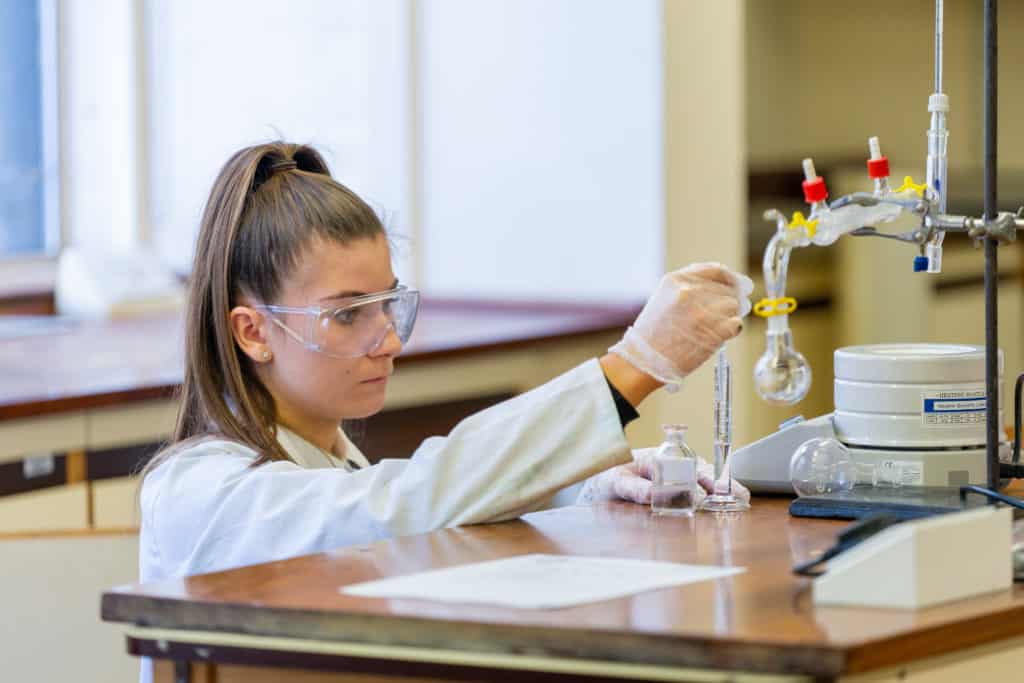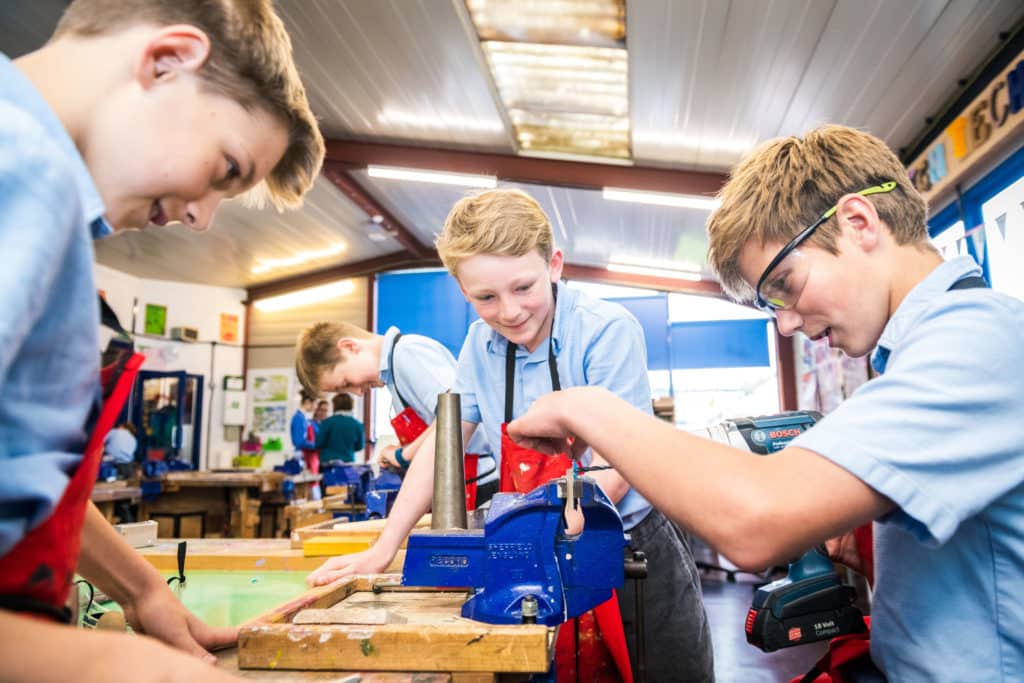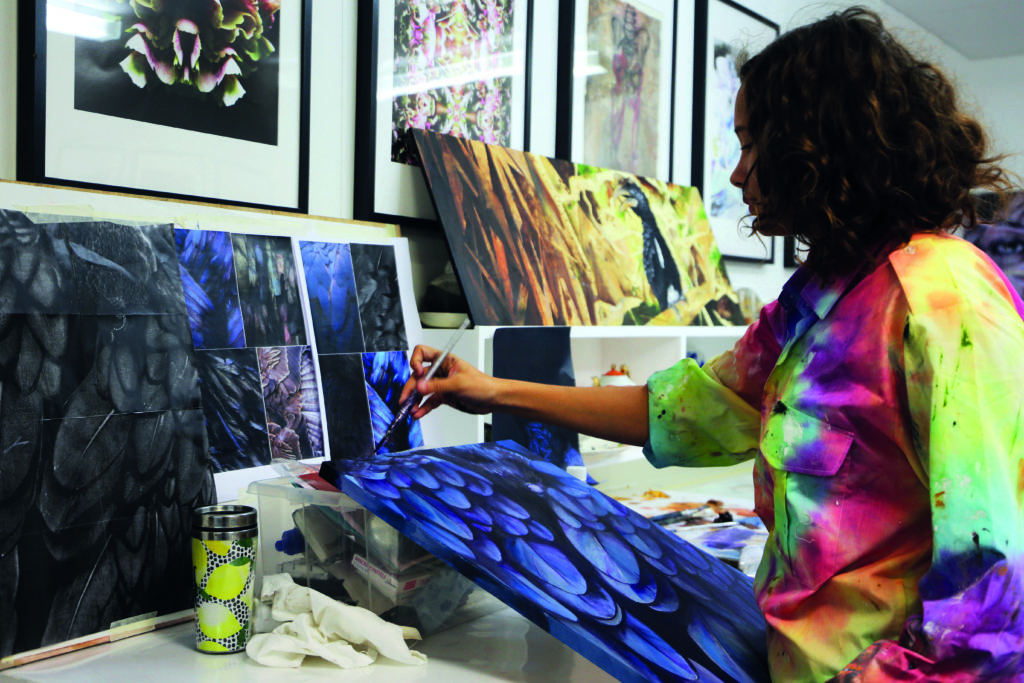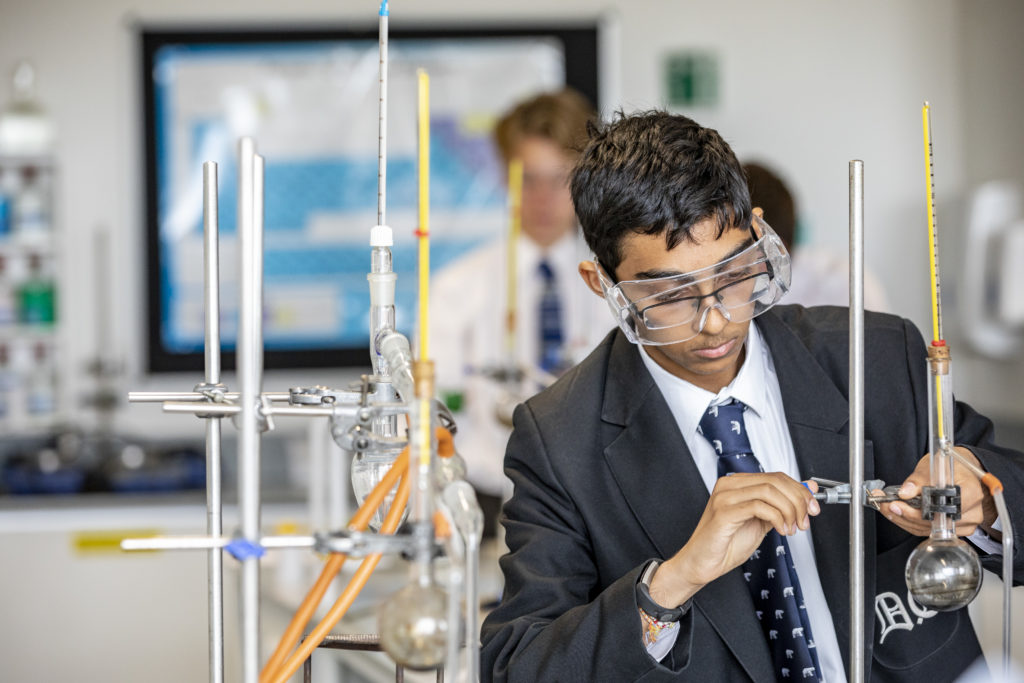STEM plus Arts equals magic, as children make connections that transform familiar school subjects into something creative, practical and vital for the future of innovation. Here’s an insight into six top schools and their STEAM strategies.
What is STEAM in schools?
STEAM stands for Science, Technology, Engineering and Mathematics with Arts.
How six UK schools teach STEAM
Eltham College

At Eltham College more than a quarter of timetabled subjects are allocated to core science, a subject which has a strong uptake at A level. Alongside the core sciences, the school offers Astronomy at GCSE and students can also study geology right up to A level.
The College has appointed its first specialist scientist to direct learning in the Junior School, helping to foster understanding and enthusiasm. Science Week creates links with other subject areas and a lively Science Society encourages students to present on any topic of scientific interest. Here, interdisciplinary subjects take things further. For example, a Visiting Music Teacher presented on the theremin and laser harp and discussed the physics of music.
With the Gerald Moore Gallery on site, there are endless opportunities to explore science and creative spheres together. Pupil collaborations here have included exhibitions on artists’ interpretations of science, while Science Week this year hosted an ‘Environmental Crisis’ exhibition which was a large-scale collaboration between sciences and arts.
Referencing the arts within the science curriculum helps students to recognise transferable skills and interdisciplinary links. Those that don’t see themselves as pure scientists build skills and interest through related areas – from photography to presentations. Students taking on the First Lego League competition have recognised the value of creative problem-solving as well as dramatic presentation.
Co-curricular activities generate enthusiasm outside the classroom. The student-led and organised Rocketry Club met twice a week online during lockdown. Inter-house science activities also inspire – be it the school’s Science Society, or GreenPower Club. Design Technology (DT) and art have become an essential part of extra-curricular activities, with CAD, laser-cutting, and 3D printing helping to put ideas into practice. Peer-group learning and teamwork happen naturally here. In fact, students with practical experience in art and DT are seen as hugely valuable contributors to these science activities. Their knowledge of the aesthetic has also proved critical to the success of school teams taking part in the Galactic Challenge and UK Space Design Competitions – both of which Eltham College won this year.
Kingswood School

While STEAM is now being fostered all the way through our schools, starting them young is the approach used at Kingswood School, Bath, which offers education from nursery years up to 18. By the time children move on to Senior School, they understand the potential overlaps between science and arts subjects and can start to forge their own connections.
Every child, from Reception to Year 6, has lessons given by the school’s STEAM department. For younger children, the focus is on core skills and knowledge, while from Year 3 onwards lessons take a more cross-curricular approach. Teachers use project-based learning to help children develop skills they can apply to problem-solving situations.
Younger children’s lessons are mostly made up of art, DT, computing, and outdoor learning, with science also taught as part of the curriculum. As they progress, science becomes a more discrete lesson. They continue to have art on top of the additional STEM lessons, computing, engineering, and DT.
Kingswood has dedicated STEAM classrooms – located on the top floor of the new Tudor Brown Innovation Centre. The creative kit includes a kiln –useful for firing everything from dragons to Tudor roses. Much of the science curriculum is practical, with lessons developed out of students’ questions. Computing and engineering rooms are joined by a connecting door, encouraging a free flow of ideas and experimentation. Among all the equipment on offer, the robots are stars, ranging from basic b-bots to Lego Mindstorms for coding fun. A CNC machine lets them design with plastic, wood, or metal while the desktop vacuum formers are very useful for the Year 3 chocolate project.
The school, which sits on a huge site surrounded by woodland, has a Secret Garden for nature study and exploration as part of its outdoor learning program. Leaf identification, roasting marshmallows, making catapults, den building, learning, and forging links between science and creativity all happens here.
Hazelgrove Prep School

At Hazelgrove Prep, Somerset, the spark of STEAM is stoked through teaching approaches designed to inspire next-generation engineers, mathematicians, artists and scientists. The curriculum is varied and incorporates a whole range of subjects, with academic and theoretical areas sitting alongside investigative and practical work.
Art and DT departments work together to run multiple cross-curricular projects. From the very-useful-to-young-people ideas such as creating skateboards and recycling fashion to the ‘wow’ stuff such as kinetic art-inspired hanging mobiles. Head of DT Bonnie Barton says: “Hazelgrove children embrace STEAM wholeheartedly in this way. Creating products that they have designed and made themselves is a highly motivating, tangible experience. Children use large laser cutters from Year 3 as well as 3D printers and a CAD embroidery machine that embroiders their designs at the push of a button”. Outdoor activities are another way to keep children inspired and energised by the possibilities of science + arts.
The school holds a festival every year and its recent STEAMFest was filled with drama, including ‘Wonderlab’ investigation stations, animatronic dinosaurs, coding and programming workshops, daily Codebreaker Challenges and a fashion show focusing on upcycling and recycling. Children also worked alongside the e-NABLE Charity in creating a 3D printed hand, learning more about its work to create hands and arms for those in need of an upper limb assistive device.
Bonnie Barton says STEAM is both creative and forward-thinking but, most important, keeps children at Hazelgrove engaged. “Running across the curriculum, children develop a genuine love for a range of subjects.”
Mayfield School

At Mayfield, the East Sussex boarding and day school for girls aged 11 to 18, breadth of education remains at the heart of their approach, with STEM and core arts subjects compulsory up to GCSE level. Uptake of sciences remains strong at A-level stage, too. One key facet of science teaching here is to encourage girls never to think of science as a stereotypically ‘male domain’, says Head of Biology Rachel Davies. The school focuses on female STEAM Heroes as part of its work to encourage this – from Mme Tussaud to Hedy Lamarr to the even more unsung pioneers, such as computer scientist Sister Mary Kenneth Keller.
There is a strong tradition at Mayfield of pupils going on to fields such as veterinary and medical, but that doesn’t stop them from pursuing their creative interests – or seeing intersections –with the arts. Rachel Davies cites one of their students who, with the aim of being a surgeon, learned loss of manual dexterity is becoming a problem in the surgical field. As a result, she has successfully combined hard sciences with ceramics at A level in order to add to her skillset for her future career.
The school’s STEM Club is thriving. Rachel Davies says they find all young people have an innate sense when it comes to areas such as coding and robotics. There is a strong practical bent in much of their work, finding solutions to design problems and considering big-picture issues such as the environment. One recent challenge involved a visit from Dyson where the girls ended up putting together their own vacuum cleaner from
a pile of components – science and team problem-solving brought vividly to life.
STEAM links are forged throughout the school years by giving pupils opportunities to use technology in their art and design projects. There is also an eminently practical approach in PHSE sessions, where a lot of team-building work goes on. When your group is tasked to build a chair out of a cardboard box, with no glue or tape allowed, it’s impossible not to think outside the box – also an object lesson in design-thinking approaches that lie at the heart of STEAM!
Blackheath High School

STEM sits at the heart of Blackheath High School GDST‘s approach but, says Head of Design & Technology Tim Masters (a trained architect), it does not sit in a silo. “Combining the subjects is essential to have a balanced and rounded view when creative problem solving,” he says. The school is fortunate in its location, close to Greenwich Royal Observatory. “We have partnered with Greenwich’s Royal Observatory to study astronomy at GCSE in this world-class scientific location,” says Deputy Head Natalie Argile, who is also a science teacher by training. A recent £18 million investment in school facilities has brought new science labs, but also an Apple Mac Suite, music rooms, music technology lab and art and textile studios. There is, says Natalie Argile, an approach of championing lessons across all fields.
Blackheath High believes skills learned in technical and artistic disciplines are complementary and hosts its own STEAM Week. Events have included lectures on creativity and AI and a session on using maths in jewellery design. Every STEAM Week there is a collaborative project between the Music and D&T departments. One notable project was the creation of the ‘Musical Boghorn’ made from a loo (bought new for music-making purposes!). This was played during the whole-school assembly – an innovative and unforgettable way to celebrate and develop interdisciplinary thinking.
Blackheath High also encourages pupils to go create through co-curricular clubs – from Bamboo Bicycle Making Club to the Edible STEAM Club (think cooking meets chemical reactions). Natalie Argile says that interdisciplinary co-curricular and enrichment activities positively affect the way girls respond to core science and maths lessons. While they love the practical and hands-on elements, thoughtful discussion helps to embed an attitude of critical enquiry. Tim Masters says there is an emphasis on understanding the design process – taught as ‘PROCESS8’. This sets out a framework that can be applied to anything. “Once the idea is alive it requires developing and solving with the use of technical experimentation to-ing and fro-ing along a cyclic path,” he says. In other words, students are learning the design-thinking approach considered
so critical to innovation in the industry.
Dulwich College

Having celebrated its 400th birthday last year, Dulwich College is certainly not resting on its education laurels when it comes to sparking enthusiasm for science and the intersections with the arts. Dr Joseph (Joe) Spence describes this as “no accident” and, when he joined as Master in 2009, he presided over an extension to the science building. Here, there are 18 labs, three preparation rooms and – pride of place – the James Caird Hall exhibition space that enables science to come alive and connections with other fields to be explored.
Joe Spence adds that firing the spark is about much more than just great buildings. It’s about getting boys to: “experiment in science”. This means lots of practical work, assisted by an army (more than 25) of specialist teachers. All boys here take three sciences and Maths to GCSE, and many go on to A level. But throughout their time here, the school encourages them to also develop ideas – the connections you make when you look beyond what the textbooks say. “We don’t work with two cultures here. Science is at its strongest when it is creative,” he adds.
The approach does work since the school’s art students are constantly to be found working in the labs or creating pop-ups in what would be traditionally considered science spaces. Then, too, there are opportunities to bring science right into art lessons – for instance, focusing on dermatology and skin through an artist’s lens.

Computer Science is also a key strength at Dulwich – with exceptional facilities to develop skills. The problem solving, information management and play available as boys learn more about computing can all feed into other areas.
Beyond the syllabus, Dulwich College keeps the STEAM spirit going through a dizzying range of clubs and societies so that students can pursue their passions beyond the classroom. Free Learning is another pillar of the approach here, giving boys the opportunity to look outside the syllabus and pursue the things that interest them.
Dulwich College took learning further during lockdown by launching Thinking About, a series of live online lectures bringing together guest speakers from across arts, humanities and science. The project was in partnership with Southwark Schools’ Learning Partnership, which meant Year 11 and above pupils from 13 state and four independent schools put their heads together – a perfect experiment in STEAM power and encouraging young people to think outside the science or arts silo.
This article originally appeared in Absolutely Education magazine’s Autumn/Winter edition.
If you would like more professional tips on marketing your schools do get in touch with the Digithrive For School’s team who are always happy to help. contact us here